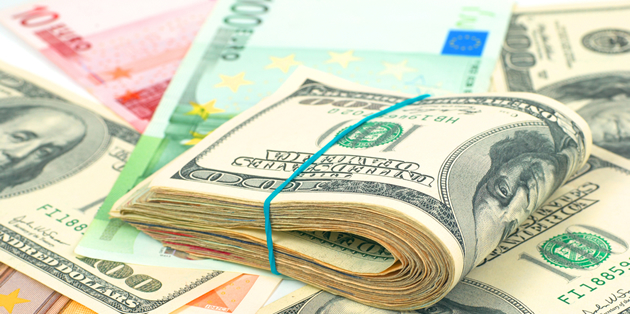- Euro Australian Dollar Exchange Rate Rallies 1% on ‘Aussie’ RBA Cut Expectations – With a rate cut forecast, AUD plummeted across the board.
- ZEW Economic Surveys do little to Devalue Euro – Woeful sentiment prints were offset by the unlikelihood of near-term ECB stimulus.
- Weak Wage Growth and Inflation Put ‘Aussie’ on the path to a Rate Cut – If ecostats continue to print poorly, RBA may be forced to act.
- Forecast for EUR/AUD Depends on Thursday’s European Central Bank Rate Decision.
Fears over the Reserve Bank of Australia’s (RBA) willingness to cut rates at next month’s policy meeting have seen the Euro Australian Dollar exchange rate surge 1% so far this morning.
The Euro has seen little depreciation in reaction to today’s ZEW economic sentiment surveys, despite all three showing a substantial decline.
Analysts surveyed by Bloomberg believe the European Central Bank (ECB) will keep rates on hold this week, at odds to previous claims by central bank President Mario Draghi that further stimulus is needed. This fact has kept the Euro buoyant.
Currently, the Euro Australian Dollar exchange rate trades at 1.4762.
Euro (EUR) Holds Fast Despite Slumping Eurozone Economic Confidence
The woefully printing ZEW economic surveys coming out of Europe have done little to depreciate the common currency in any major fashion.
Instead, investors are still brightened by the hope that the European Central Bank (ECB) will elect to keep interest rates on hold for the time being despite previous calls from ECB president Mario Draghi for near-term economic stimulus to deal with the Brexit fallout. A group of forecasters surveyed by Bloomberg all posit that the central bank will follow Bank of England (BoE) Governor Mark Carney’s lead and adopt a wait-and-see approach.
The ZEW surveys do, however, hold a warning for the future as the reports are indicative the situation over a six-month period. We have only just started to see the tangible real-word issues stemming from the Brexit nearly a month after the vote. Most data prints have been for either May of June so far and the late-month June referendum has already seen some reports from the month hamstrung.
Chances are more woeful data prints will be released in the coming months, prompting the ECB to finally loosen policy and in turn, trigger Euro depreciation.
‘Aussie’ (AUD) Guts Itself on Increased Reserve Bank of Australia Cut Chances
The ‘Aussie’ continues to fall across the board after weak core inflation and wage growth prompted some analysts to expect a near-term rate cut from the Reserve Bank of Australia (RBA).
Iron ore demand has been more than sated as global stockpiles have shown the commodity is experiencing a supply glut. Chinese demand has fallen off as Asian ports struggle to shift the ore and mining company Rio Tinto continues to ramp up output.
Previously, miner’s stockpiles were low as sales gracefully exceeded production last quarter. The previously insatiable Chinese requirement for iron ore and a massive increase in steel exports kept the commodity in high demand. In turn, the commodity held a strong price and bolstered the Australian Dollar along with it.
Careful dissection of the RBA’s July meeting minutes have shown the central bank is ready to enact monetary stimulus if the economic outlook worsens. If inflation remains weak and the recent mining-boom related jobs market momentum subsides, the RBA is very likely to cut rates and send investors scurrying from the Australian Dollar.
ECB Rate Decision Predicted to Trigger Euro Australian Dollar Exchange Rate Movement
All eyes will be on Thursday’s European Central Bank rate decision.
Previously, analysts were in agreement that the central bank would likely put forth some stimulus measures in the form of a benchmark rate cut. However, recent findings have led experts to expect the bank to keep rates on hold for now in a Mark Carney-esque move, allowing the institution to wait for more concrete post-Brexit data to work from.
The only remotely impactful Australian ecostat is due for release on Thursday.
The NAB business confidence survey for the second quarter will likely provide a useful insight into the current economic conditions for business in the post-Brexit world. However, the print is unlikely to elicit much movement.
Drastic movement for the Euro Australian Dollar Exchange Rate is likely to stem from any commodity fluctuations and speculation surrounding the ECB’s upcoming rate decision.



